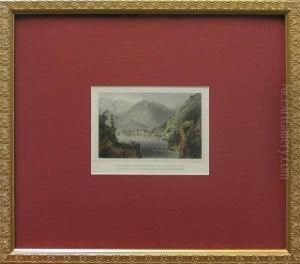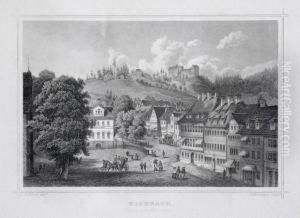Ludwig Rohbock Paintings
Ludwig Rohbock, born in 1824 in Germany, was a notable engraver and lithographer of the 19th century, known for his detailed cityscapes and architectural views. Rohbock's work is characterized by its precision and clarity, capturing the urban transformation of Europe during the Industrial Revolution.
Educated in the arts, Rohbock trained in the techniques of steel engraving, which allowed for fine detail and mass production of images. His engravings often depicted cities and landscapes, showcasing not only the aesthetic aspects of these locales but also providing a historical record of their appearance during his lifetime.
Rohbock traveled extensively to gather inspiration for his work, and his prints often served as illustrations for books, magazines, and atlases, making them accessible to a broad audience. His engravings were particularly sought after for their educational value, as they provided a visual account of places that many people would never have the chance to visit.
Despite the rise of photography, Rohbock's engravings remained popular due to their artistic interpretation and the limitations of early photographic technology in terms of reproduction and distribution. His attention to detail and ability to capture the essence of urban and rural settings have left a lasting legacy, and his works continue to be appreciated by collectors and historians.
Ludwig Rohbock's contribution to the world of printmaking and his dedication to the craft of engraving make him a noteworthy figure in the history of art. He died in 1893, leaving behind a rich body of work that continues to offer insight into the 19th-century European landscape.

